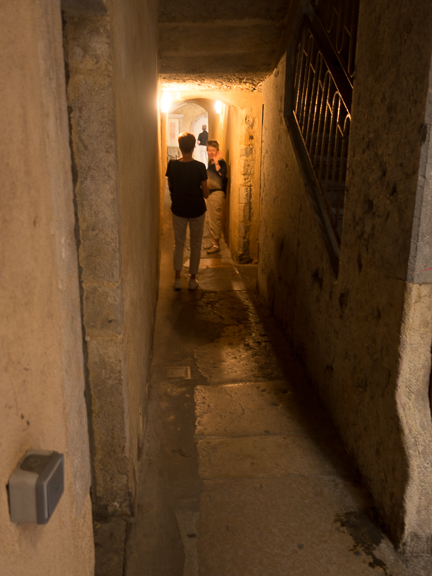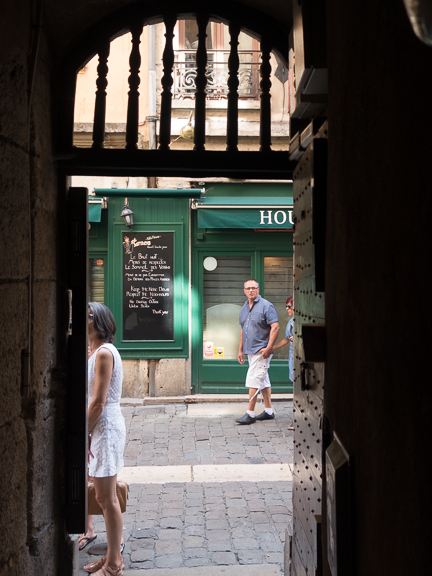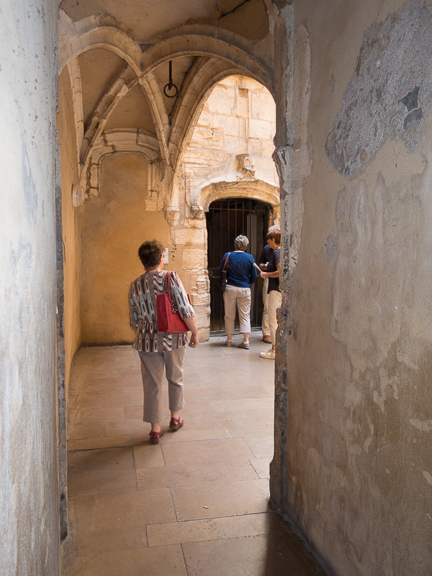Lyon
Road trip! Whoo-hooo! Sunday we packed up the Germain-mobile and went with Mary and Gilles to Lyon, the second-biggest city in France. We probably would not have ever gone to Lyon but friends of ours were staying there for almost three weeks and we really wanted to see them, so this was the perfect time. Well, maybe not perfect, as it was hot-hot-hot in Lyon, the hottest area of France. But that was a minor distraction in a really excellent three-day visit to Lyon.
Let’s get right to the real reason we went to Lyon: to share good food, good wine and good times with Jim and Maryann. Mission accomplished:
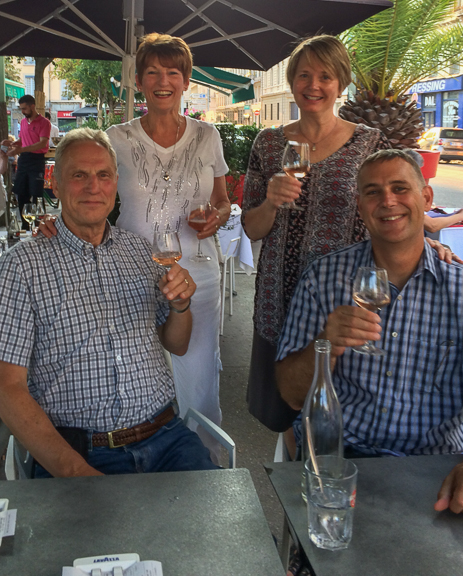
The six of us - Laurie and I, Mary and Gilles, and Jim and Maryann - joined up for dinner two nights and had just the best time imaginable. In the picture above we sat outside in the warm evening: we met at 7:30, drank some vin rosé, had dinner and got up from the table at 11:30. The next night we went to a small typical bouchon, which is what the old, working-class restaurants were called. Now, lots of new restaurants call themselves bouchons. The name really describes a typical bistro-style restaurant serving the food for which Lyon has been famous for centuries. The second night’s dinner started at 8 and we left the restaurant about 11:30. Gotta love those long French meals. The dinners were great both nights - Maryann got to try steak tartare (you’ll have to ask her about it) - and everyone agreed that Lyon’s reputation for gastronomic excellence is no exaggeration. Food alone would be reason to visit this city.
Lyon
Lyon is famous for two things: food (see above) and silk. In 1535 François I granted a royal charter to two silk merchants in Lyon and, five years later, awarded a monopoly on French silk production to the city. By the mid-1600s, there were over 14,000 looms in Lyon and a third of the city was employed, directly or indirectly, in silk production.
It wasn’t all smooth sailing, though. In the later-1700s automation started coming to the industry, threatening the thousands of canuts (silk workers). In the early 1800s Joseph Marie Jacquard perfected a loom that used punched cards to operate, allowing mass production of even complicated designs and putting out of work about two-thirds of the canuts. They revolted in 1831 and again in 1834, both times occupying the city and finally being beaten by the French Army.
Lyon has several museums dedicated to fabric, silk especially. The biggest, the Musée des Tissus, has many beautiful fabrics showing the history of the design and use of silk. Unfortunately, photography is prohibited there. But, I had to take a picture of these silk shoes:
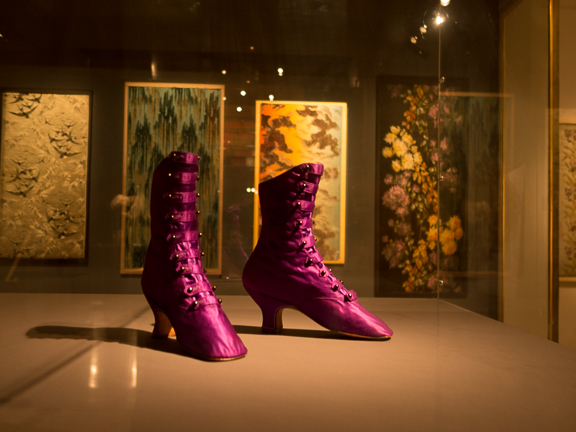
Today, the most visible remains of the old silk industry are the traboules, hidden passages through buildings that allowed silk to be transported throughout the old city without fear of it being ruined by rain. A number of these traboules still exist; here are some pictures of ones we walked through.
| Laurie and Mary in a traboule. This passage was probably built in the mid-1600s |
The traboules later served another purpose. During the German occupation of World War II, they were used to hide and move through the city Allied airmen who had parachuted from airplanes and escaped capture. Because the entrances to the traboules look just like any other door, the German soldiers looking for airmen could not track their movements. It’s said that many an escaped Allied airman went through the traboules to freedom.
Basilique Notre-Dame de Fourvìere
If you’ve been to Paris you’ve surely seen the Basilique du Sacré-Cœur, overlooking the city from the heights of Montmartre. Lyon has a church similar to Sacré-Cœur in many ways, but way different in appearance: the Basilique Notre-Dame de Fourvìere. Both basilicas were built about the same time, in the years immediately after the Prussian invasion of France in 1870-71. Both were built for the same reason: the city believed that Mary had interceded to save the city from the Prussians (though I don’t know how they came to that conclusion in Paris, which was besieged, bombed and occupied by the Prussians) and so both are dedicated to the Virgin Mary. But while Sacré-Cœur has a distinctive white exterior and a decidedly un-interesting interior, Basilique Notre-Dame de Fourvìere has an interesting but not overly-dramatic exterior and an over-the-top interior. Pictures:
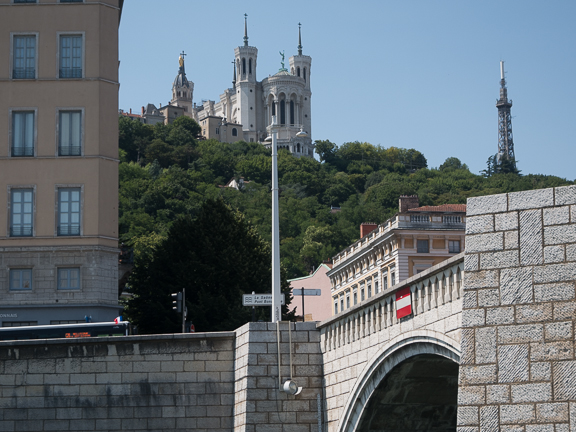
Basilique Notre-Dame de Fourvìer from the River Saône. This is the view you see from everywhere in Lyon.
And the interior:
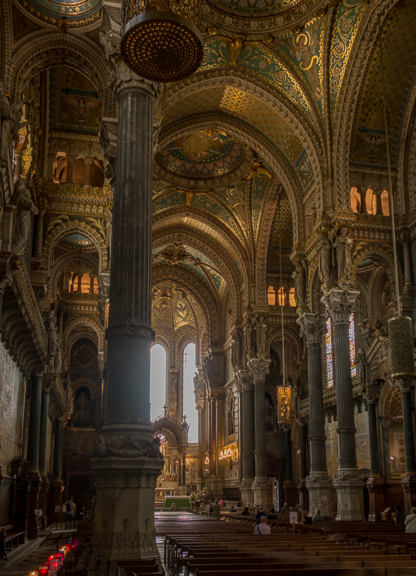
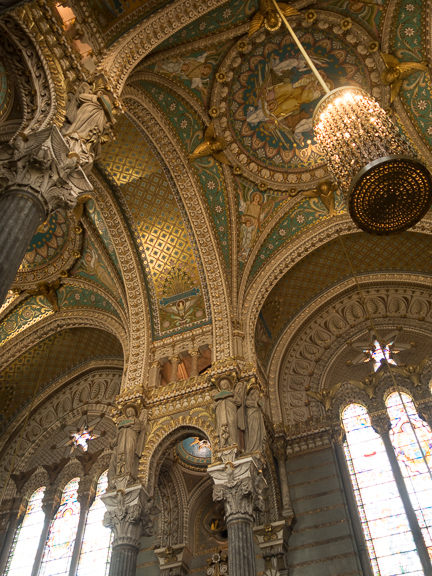
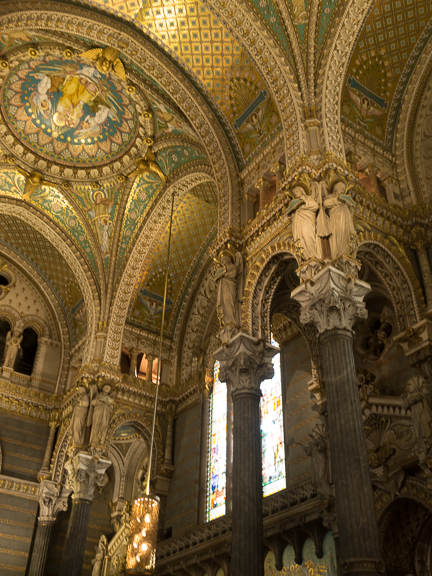
The word “ornate” does not come close to describing this interior. Not even close.
Some Modern Architecture
As the peninsula between the Saône and Rhone rivers narrows to a point at which they join, Lyon has built a number of modern buildings. We took a river tour and saw these. I love them.
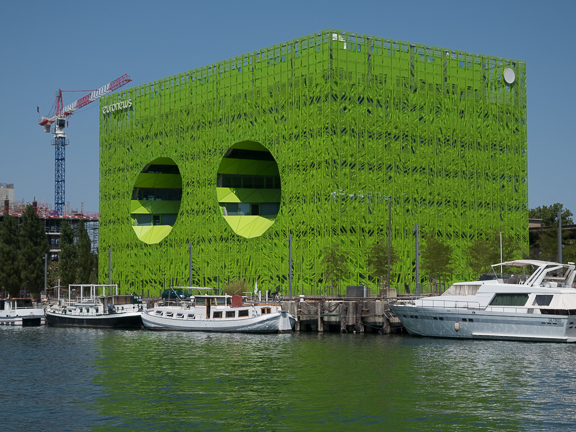
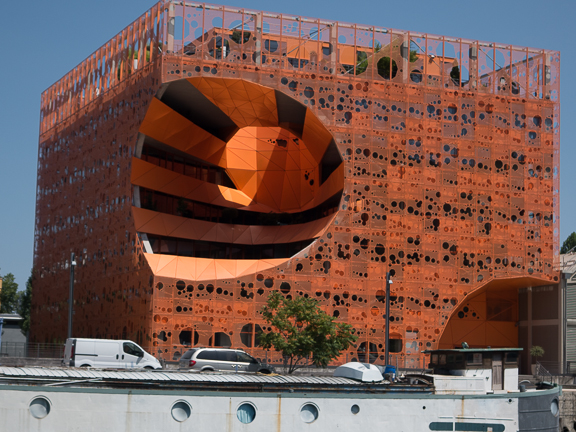
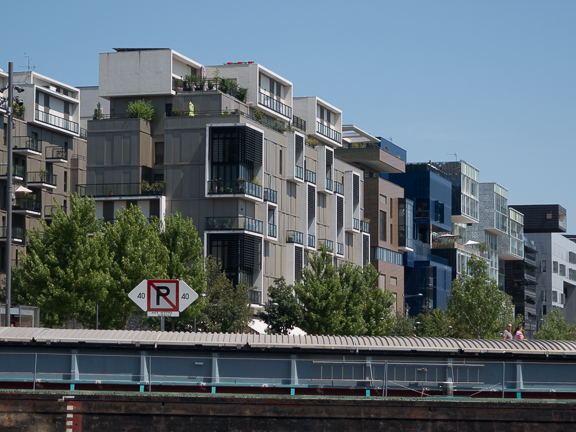
These are apartment buildings. Very cool, we think.
But, as regular readers of this blog - both of you - know, I am not always enamored of modern architecture. Remember the blog on the Louis Vuitton Foundation building in Paris - loved it. Here is Lyon’s museum effort - hate it.
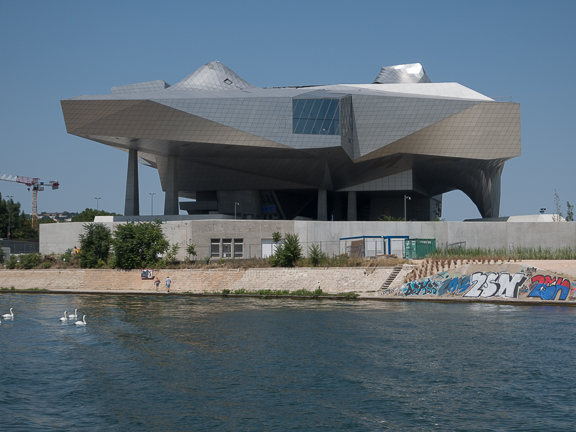
Where Frank Gehry’s building for Vuitton Foundation soars gracefully (as does his Guggenheim museum in Bilbao, Spain), this building seems heavy and clunky and decidedly un-beautiful. Just my opinion…
For some other more classical buildings that we love…along the Saône River, seen from our river tour.
[gallery columns=”2” size=”medium” ids=”2491,2490,2489,2488,2487”]
Many of the buildings in the historic part of Lyon maintain the tradition of small signs handing above them. A few I saw:
[gallery columns=”2” size=”medium” ids=”2482,2481,2479,2478,2480”]
And one last topic. Philippe DeLormé was a French architect of the 1500s. He was arguably the premier Renaissance architect in France, designing chateaux for Henri II. One of his first designs is in Lyon, where he was commissioned to create stairs and a gallery to connect two existing buildings, in a courtyard. The courtyard remains and I think it’s a fascinating lesson on how the Remaissance changed architecture. Here are a couple pictures of his gallery and staircases; compare them to the buildings on the sides. The latter are pretty plain; DeLormé’s gallery is beautiful.
[gallery columns=”2” size=”medium” ids=”2475,2474”] Phew! That’s it for Lyon. Many thanks to Jim and Maryann for being there so we could visit them. We really enjoyed Lyon and our times with them.
